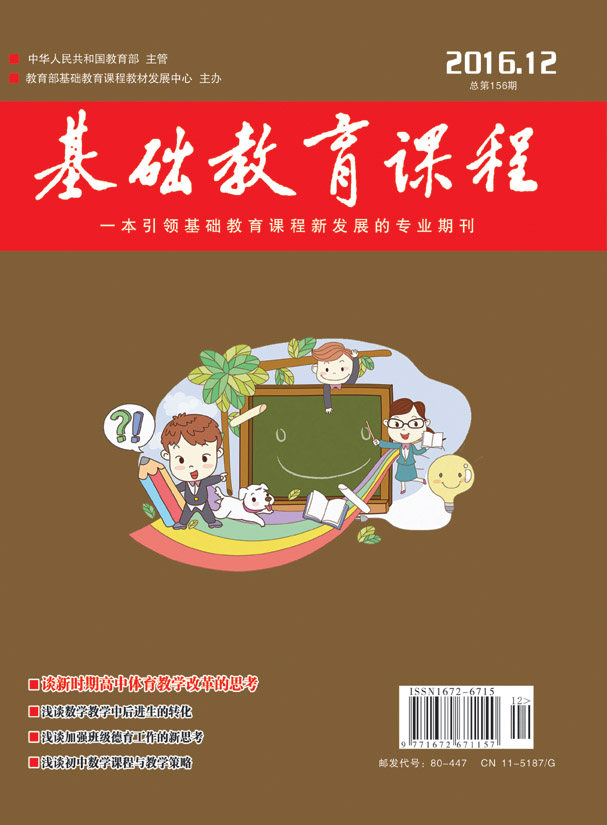节点文献
Module 1-Unit 4:Earthquakes Warming-up & Pre-reading教学设计
Warming-up & Pre-reading教学设计
甘肃省华亭县第一中学 王高鹏 张晶晶
一、教材分析(the analysis of the teaching material)
本单元的中心话题是“地震”,内容涉及“中国唐山地震的不眠之夜”、“美国旧金山1906年地震”、“地震后重建的新唐山”、“地震的基本知识”、“在地震或突遇的灾难中如何自救、救人”等。本单元的语言知识和技能都是紧密围绕地震这一主题设计展开。
本节课课型为听说课,授课内容是人教版必修一第四单元Warming-up和 Pre-reading部分。其中“Warming-up”部分提供了两个城市的图片,分别是中国河北省的唐山市、美国西海岸加利福利亚州的旧金山市,这两个城市在20世纪都曾发生过大地震,要求学生描述地震对这两个城市造成的危害,并展开讨论。“读前”部分设计了两个有关地震方面的问题让学生回答。第一个问题是让学生设想一下:地震发生后的瞬间你在离开住房前只来得及带走一件东西,你要带走什么,为什么要带这件物品?第二个问题是让学生看图回答地震前夕动物和自然界奇特的异常变化。根据教材的整体安排,这两部分旨在通过情境创设和活动设计来调动学生兴趣,对后续的语篇阅读做好铺垫。
二、学情分析 (the analysis of the students)
本教学设计的教学对象是兰州市第五十一中学的高一学生,为借班上课,故难以全面把握学生的情况,只能做出粗略的评估。因此,本课的教学活动以高一学生应有的语言知识和具备的思维能力进行设计。
三、教学设计策略(the strategies on the instructional design)
1. 教材资源整合
为了更好地进行听说活动,让学生明白在地震或突遇的灾难中如何自救、救人,教师从以下两个方面做了调整:第一,课本“热身”模块分别提供了唐山和旧金山的两幅图片,由于学生缺乏相应的背景知识,所以不直接讨论这两个城市,而是通过师生的交互活动从自然灾害入手,引出地震,将唐山地震的发生时的瞬间场景通过视频展示给学生;第二,将“读前”的问题结合课本练习册听力前活动进行拓展性讨论,引导学生认识地震自救的相关方法。
2. 教学实施技术路线图
3.课堂活动思维导图
四、三维目标(three - dimensional target)
By the end of the lesson, the students will be able to:
1. get a general idea of earthquakes using some topic-related expressions.(knowledge aim )
2. enhance abilities to listen and speak through task-based and topic-related activities.(capability aim)
3. know the ways to reduce losses of an earthquake and how to protect oneself and to help others in an earth-quake. (affection aim)
五、教学重点(teaching important points)
1. 运用语言知识描述地震带来的灾难。
2. 能够总结地震逃生的相关表达。
六、教学难点(teaching difficult points)
1. 如何运用所学知识制作个人应急地震包。
2. 怎样通过合作学习制定地震逃生计划。
七、教具(teaching aids)
电脑、多媒体、PPT
八、教学方法(teaching methods)
任务型语言教学法(Task-based language teaching)
情景教学法(Situational Teaching Methods)
九、学习方法(learning methods)
合作探究法(Co-operative exploring methods)
十、教学过程(teaching process)
Step 1 Lead-in
Task 1: Brainstorming
Ask students to list some natural disasters, such as fire, flood, drought, sandstorm, mudslide, earthquake and so on.
设计意图: 本环节以头脑风暴的形式激发学生的认知图式,引出本课话题“地震”(earthquake)。
Task 2: Video watching and describing
Share a video clip of the film After Shock to re-experience the terrible moment when Tangshan earthquake happened;
Lead students to describe what they see in the film from such aspects as buildings, roads, parents and children.
设计意图:语言的学习需要联系现实生活,只有在真实的情景中才能领会语言所要传递的真正意义。通过观看电影视频剪辑将学生带入一个真实的地震情景当中,学生结合所创设的情景对电影中出现的人和物进行描述。在经历了灾难的可怕之后,开始反思如何避免灾难或减轻灾难带来的伤痛,为下一步的讨论做好铺垫。
Step 2 Discussing
Task 3: Describing & discussing
Firstly, ask students to work in groups to discuss what the possible ways are to protect oneself and then one member of each group is supposed to give their ideas to the class.
Secondly,ask students to turn to page 66 to look at the pictures and discuss what the students in a San Francisco school might learn.
设计意图:在观看视频之后,引导学生讨论逃生自救的办法,运用所学知识表述简单的观点,并结合课本图片描述图中内容,达到提高对地震逃生自救认识目的。
Step 3 Listening in
Task 4:Listening
Firstly, let the students listen to a dialogue between a teacher and her students and write down the three key words that they mentioned.
Additionally, ask one student to perform three different actions of dropping, covering and holding.
Thirdly, ask students to listen to Part 1 again and write down the three things to do to keep safe if there is an earthquake.
My earthquake plan
First thing I must do:_____________________________________
Second thing I must do:___________________________________
Third thing I must do;_____________________________________
Lastly, let students listen to Part 2 again and write down any other advice that the students think is useful.
My earthquake advice
If you are outside, you should
If you are in the living room, you should
If you are in the home alone, you should
设计意图:听说课作为英语教学中的一种常见课型,在培养学生语言运用上有着不可取代的重要作用。在语言学习中,听是语言信息输入的过程,说则是运用思维对输入的信息进行吸收、理解后再输出的过程。因此,此环节的设计旨在通过听力练习进一步充实对逃生自救的认识,为下一步的说的环节中地震应急包的讨论做好铺垫,起到环环相扣的作用。
Step 4 Speaking out
Task 5:Making a personal earthquake bag
Make a personal earthquake bag and give reasons why you choose these items
设计意图:本环节为语言的输出阶段,通过学生对地震的了解,结合国外学生在地震中保护自己的措施和方法,要求学生结合实际生活,设计个性化的地震急救包,体现用语言做事,用语言思考的原则,旨在训练批判性思维,升华情感,落实教学目标。
Step 5 Homework
Students work in groups to do some research about Tangshan earthquake and make a poster inchuding the general information of the earthquake,rebuilding and tips on escaping.
设计意图; 课后作业通过对唐山地震的再次认识,全面了解地震的各个方面,引导学生通过自主学习的方式巩固本节课所学内容,并为阅读课的开展做好充分的准备。
- 【发布时间】2016/12/27 21:26:30
- 【点击频次】629


